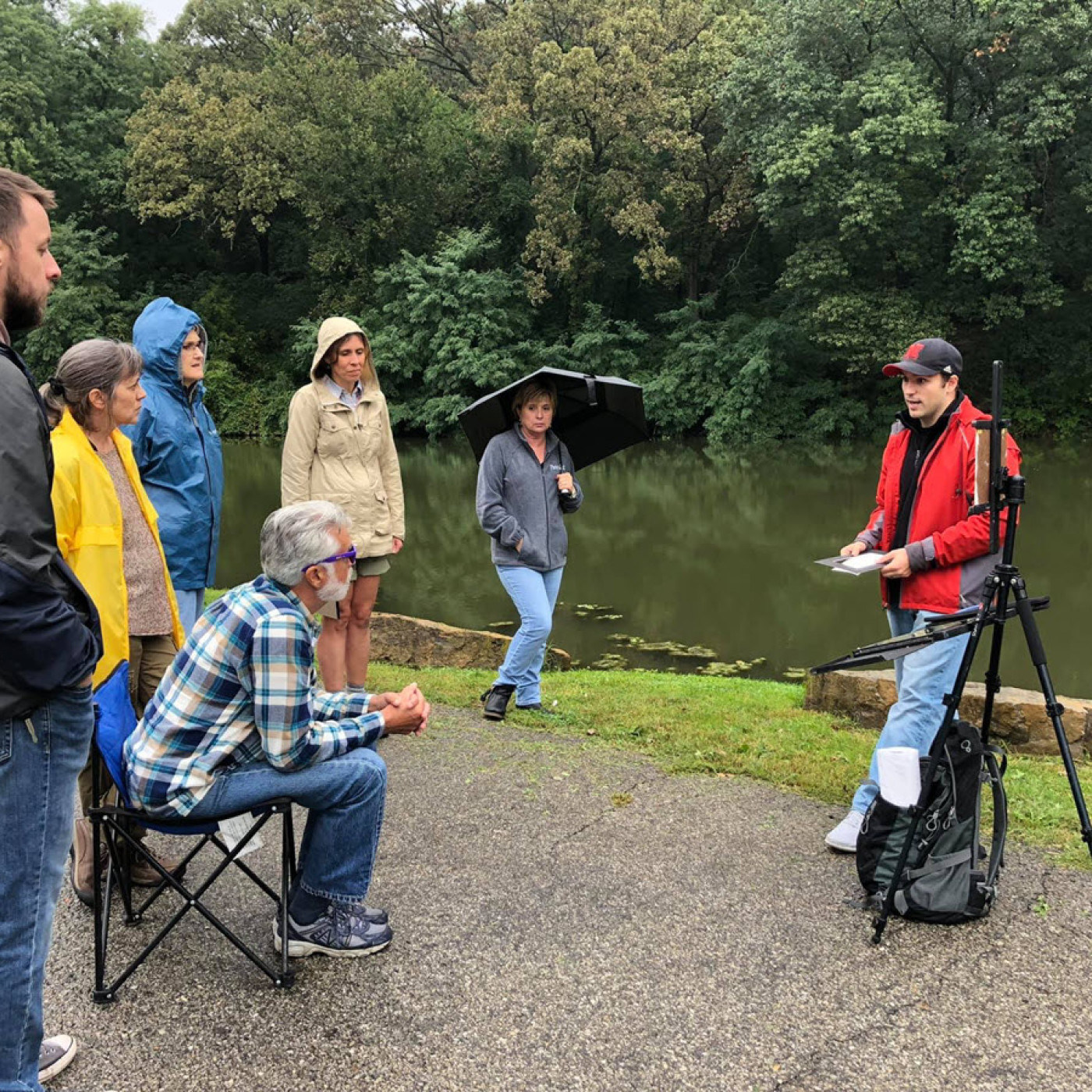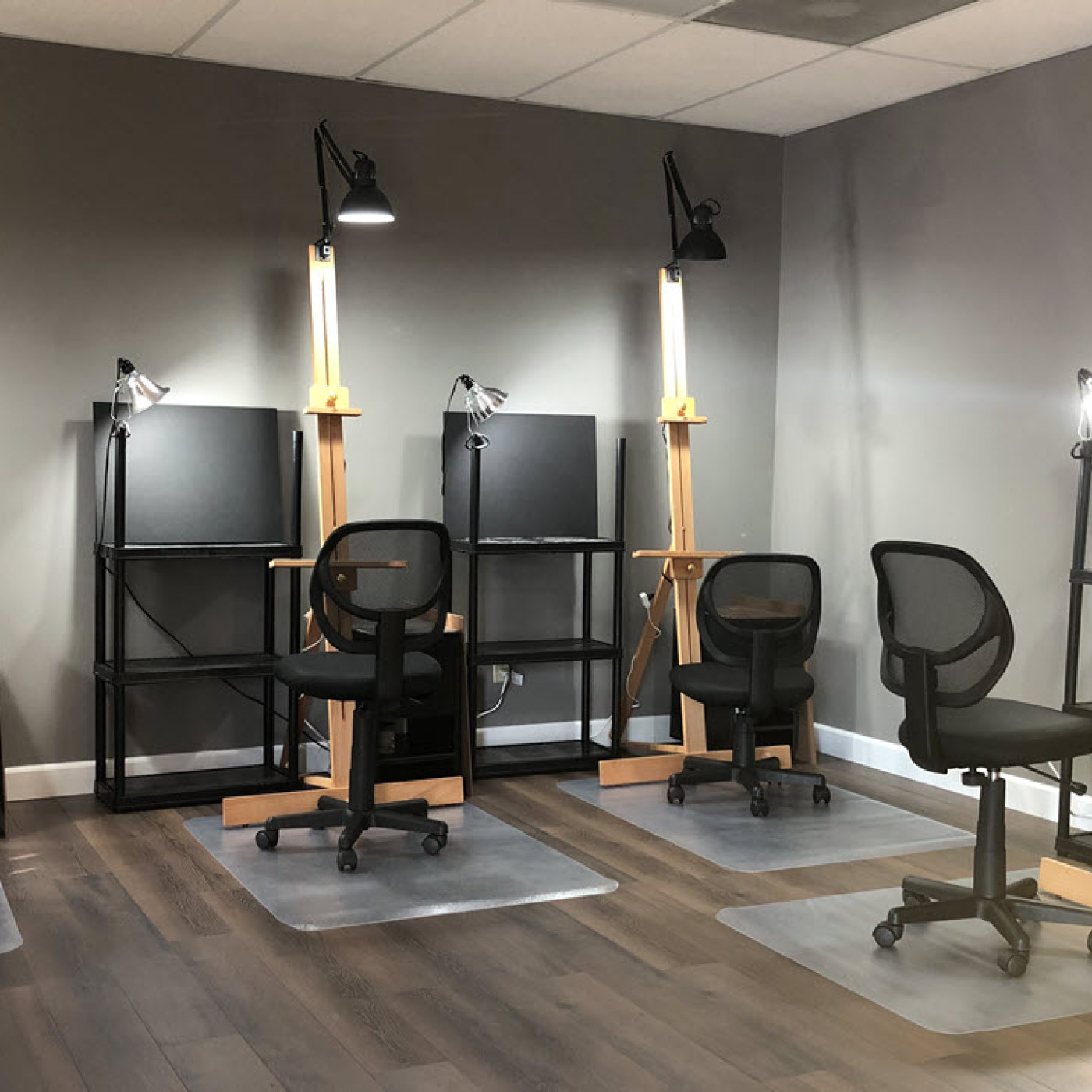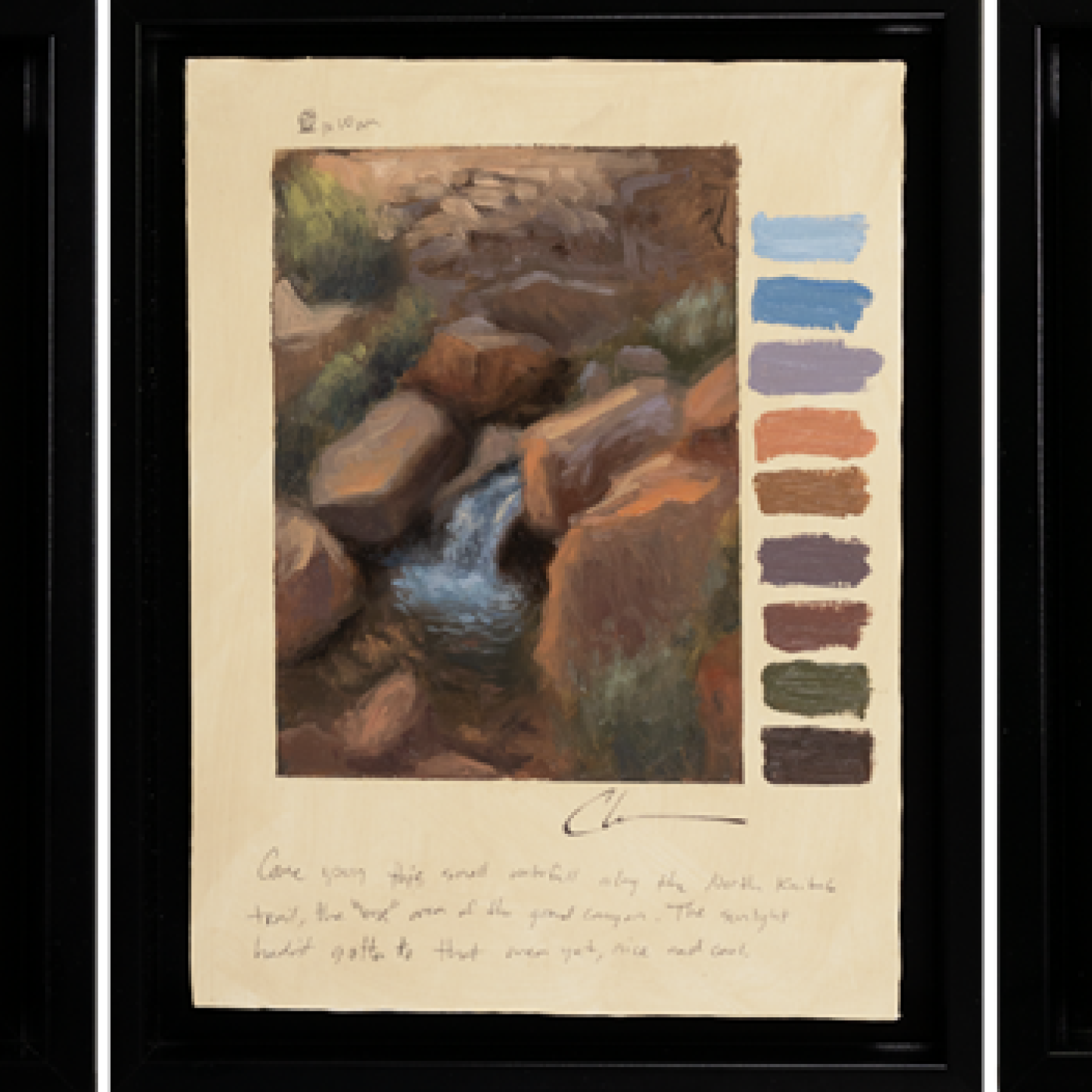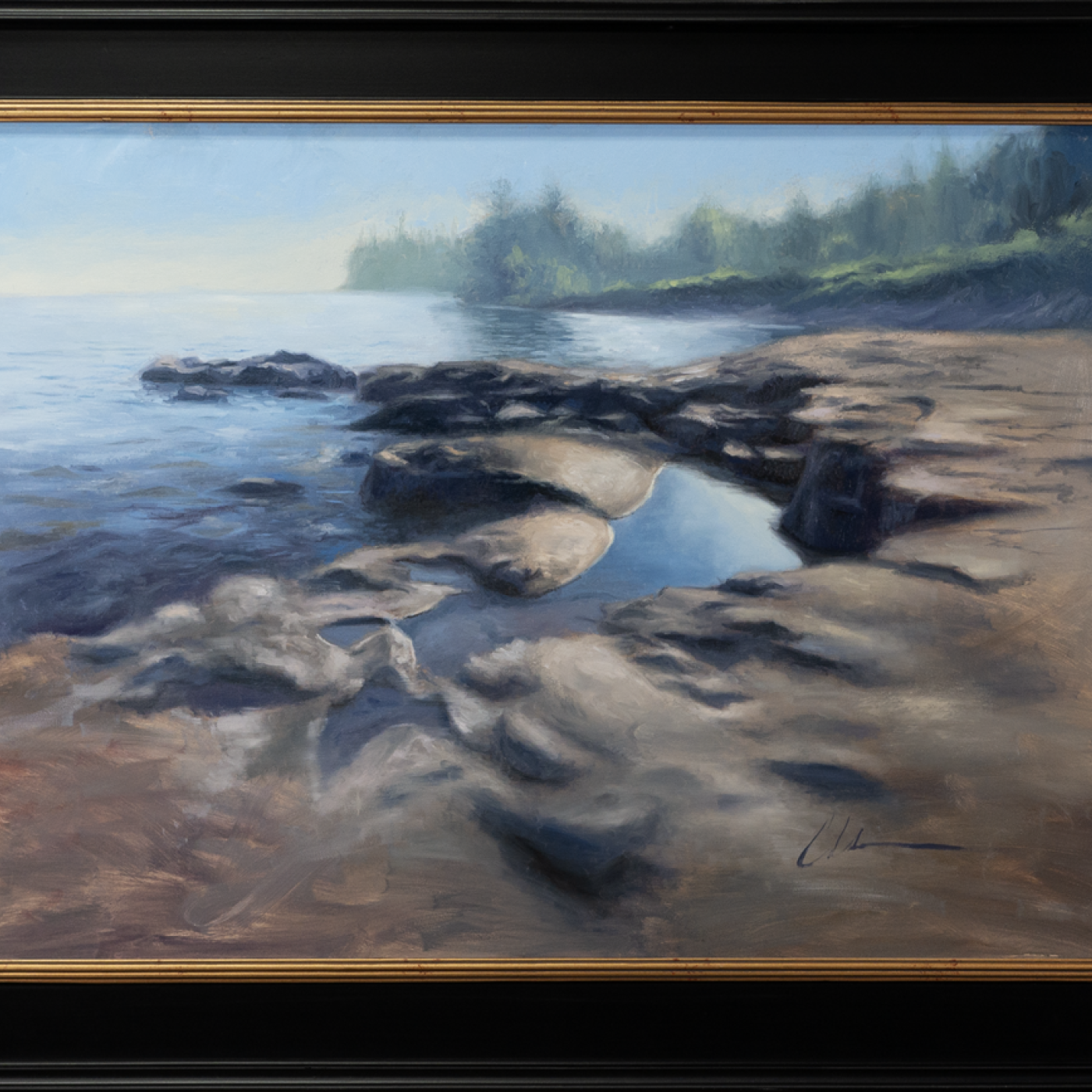Fount Atelier of Fine Art A Business With a Hybrid Approach

When Cody Wheelock was growing up, he was known as the art kid in school.
“I enjoyed drawing cartoons and comics, receiving positive affirmation from friends, teachers, and family,” he said. “In middle school, I developed an obsession with drawing realistically and began focusing on graphite portrait drawing.”
Through self-study, Wheelock captured the likeness of friends, family, and sports figures well enough to sell them for $30 each to those he knew. It ignited a passion for entrepreneurship and became a source of part-time income from eighth grade on.
When it came time to decide on a career path after high school, many encouraged him to pursue a fine art major. But he was unsure how it would translate into a stable income down the road.
Since Wheelock enjoyed explaining how he did his work to others and had an influential art teacher, he thought art education was a great compromise. He graduated from the University of Nebraska-Lincoln with a Bachelor of Science in art education and received a master’s degree in art education from Boston University.
He was a full-time art teacher for eight years and also made time for his studio practice — selling commissions and entering work in juried exhibitions. Developing a love for landscape painting, he spent time outdoors when possible, painting in plein air.
“Teaching all day, raising children, and doing studio work at night was exhausting, but I was young and loved the grind. I am grateful I went the route of building a stable career before jumping into the artist life; it allowed me to hone my skills, make mistakes, and discover my passions without the stress of earning a full-time income. I had an art professor who once told me it takes 10 years for someone to settle into a groove as an artist, and I think he was right,” Wheelock said.
As he taught and created studio paintings, Wheelock began picking up extra work. He started teaching evening classes at the Joslyn Art Museum in Omaha and weekend workshops.
After receiving requests for private lessons, Wheelock opened Omaha Atelier of Fine Art, a small school in his home studio. It quickly filled with students of all ages.
He developed a curriculum based on the 19th century atelier method, and it began producing results with his students. As things took off, it became apparent Wheelock could not juggle everything.
His wife, Laura, encouraged him to consider going full time with his art instruction and studio work. In 2018, they decided he would quit his high school teaching job, they would move to the Kansas City area, and he would open a private art instruction business.

His Business Model
Fount Atelier of Fine Art opened in Lee’s Summit, Missouri, in November 2019. The couple decided to move their family there due to the community’s small-town feel, proximity to the Kansas City metro area, excellent public-school reputation, and affluent residents.
“My goal was to lease a space outside of my home to serve as both my professional studio and instructional space. I wanted to be able to separate my work from home as best I could. We fortunately found a great location only minutes away from our home,” he said.
The business opened shortly before the COVID-19 pandemic began. “As with most small businesses, the first year was a roller coaster, even more so because of COVID-19. Fortunately, my business model includes a strong online component, which allowed me to quickly pivot and work with students virtually. Through God’s grace, we got through it and over the course of nearly five years, I have full studio classes with a waitlist and a growing number of online clients,” Wheelock said.
His business model is an in-person/online hybrid coaching approach. “Whether a student is looking to develop their drawing/painting skills as a hobby or begin selling their work, I am able to help them achieve their goals,” he said. “The goal for my business model was maximum flexibility.”
In Omaha, he offered a few workshops, along with two evening, in-person sessions each week at his home studio, with room for three to four students in each session. After Wheelock opened Fount Atelier (www.fountatelier.com), he eventually expanded to two days of in-person teaching each week — seven total sessions of five students each.
With video content for his curriculum, he started offering one-on-one online coaching for those who were not local or on the waitlist for in-studio spots. As time demands increased for his own artwork, shows, and online coaching, he reduced his in-studio teaching to four sessions, one day per week.
The instructional content he created for his curriculum includes videos, demonstrations, and reference documents. Wheelock established an online portal — students log in and access everything.
He offers in-person art coaching sessions for local students. They enroll monthly and meet in his studio once a week.
Students have access to his online content and work through the program at their own pace. “They receive instruction and watch assignment demonstrations at home via on-demand video,” Wheelock said. “Then we meet in person to do the hands-on work and receive feedback.”

He also works with clients solely online from around the country. These students have access to all his curriculum resources, and he coaches them through the program.
Wheelock meets with these students twice a month via Zoom. They send Wheelock images of their work/assignments for critique, and he creates a personalized feedback video for them, so they can see how to improve their work.
There is even an option for students interested in working through his program’s curriculum on their own. Wheelock packaged the digital content into online courses.
They work through it as their schedules allow. Wheelock does not interact with them. “While they don’t get the personalized feedback or coaching, they are able to access the content via a one-time, lower price point,” he said.
Additionally, Wheelock offers workshops several times a year — primarily during the off season for art fairs. He holds both live, online workshops, as well as traditional, in-person ones.
The range of options ensures there is a suitable price point and time commitment for everyone. Wheelock works with students as young as middle-school age up to retirees in their 80s. Some have formal art training, while most are complete beginners. A majority find him through a Google search or via word of mouth.
Wheelock’s business model has proven successful for him. It allows him to grow his fine art business while having a stable income from teaching.
And being in art fairs is a way to highlight his work and promote his online art coaching program. “Every show has a number of people interested in buying artwork, but many more who would love to learn how to do it themselves,” he said.

Art Festivals
Wheelock started participating in art shows to add another revenue stream to his business. With the instruction side of his studio set, he had time and energy to devote to growing a customer base for his own artwork.
He did his research and developed a plan to start small — and see where it went. He bought a booth setup from a local artist for a decent price.
Wheelock applied to three shows his first year and was accepted into all three. With the focus of his work landscape painting, he included a mixture of finished studio work, small oil studies, and reproductions to give himself a variety of price points.
With the shows being successful overall, he decided to jump in headfirst the following year by expanding the number and location of shows to determine which were his best fit. “Through that season, I definitely learned which shows worked well for my artwork and which to avoid, how to deal with a variety of weather conditions, and how to interact with potential customers. Midway through the year, I traded my pop-up tent for a professional canopy and display,” Wheelock said.
He now targets larger, more-prestigious events. Knowing competition is fierce, he is strategic with his application process and has backup options. His goal is to participate in 10 to 15 shows throughout the country — selling his work while also promoting his online art coaching business.

Advice for Others
Wheelock believes multiple revenue streams are necessary to cultivate a full-time art business. “I love the art fair world as much as anyone, but it doesn’t take long to learn that the highs and lows can be extreme. A record-breaking show can be followed up the next weekend with a net loss,” he said. “Teaching can be a great way to add a revenue stream into your business. That could emerge in a variety of forms, whether it be teaching classes at a local community center, hosting private students in your studio, developing online classes, doing workshops, etc.”
His background and formal training in teaching, and his love and interest in alternate teaching methods, prepared him for what he does. He recommends exploring such revenue streams as gallery representation, Etsy, selling via social media, and displaying at trade shows.
Wheelock said his biggest champion is his wife. “It simply would not have happened without her incredible love, support, and encouragement. She was willing to pick up and move our family to another state, take on a stressful job to allow me time and flexibility to get the business up and running, and keep everything afloat during busy art fair seasons,” he said. “My biggest advice to anyone thinking about starting a business of any type, let alone a fine art business, is to have a close network of friends/family who will encourage and support you no matter what.”

He advises aspiring artists to take a full- or part-time job that gives them tangible skills while they cultivate their work. “Develop your craft to a high level before going full time, while also knowing that there is never a perfect time to get started. You can learn via trial and error on your own, but investing in an experienced mentor or coach you respect can get you on the fast track. You can learn from their experience and avoid many pitfalls along the way,” Wheelock said.
Regarding home life, he said keeping priorities in check is critical. “Whatever your plan is, you and your family need to be on the same page. My wife and I sit down each winter together and plan out the potential show schedule,” Wheelock said. “Open communication is important, especially if your event schedule causes you to be away from home often.”
Wheelock enjoys introducing fair goers to the world of original art and helping people achieve their goals. “Nothing is more rewarding than seeing a student grow from an insecure, complete beginner into a skilled artist brimming with confidence, ready to go out and make a sale of their own,” he said.
